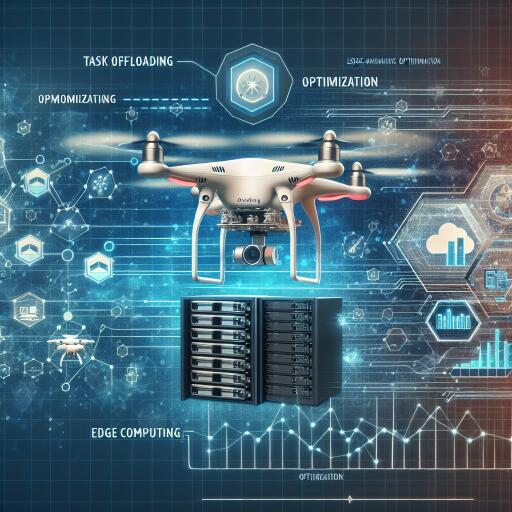Revolutionizing UAV Operations with Dynamic Task Offloading and Edge-Aware Optimization
In the rapidly advancing frontier of Unmanned Aerial Vehicle (UAV) operations, achieving higher mission efficiency, improved response times, and optimal resource utilization stands at the forefront of technological evolution. Addressing these challenges, the Dynamic Task Offloading Edge-Aware Optimization Framework (DTOE-AOF) stands as a beacon of innovation, offering a novel approach to optimizing UAV operations across edge computing platforms.
The Emergence of Edge Computing in UAV Operations
As UAVs become integral to a myriad of applications—from precision agriculture to emergency management—the limitations of central processing methods, including latency, bandwidth constraints, and scalability, become increasingly apparent. Enter the era of edge computing, which by virtue of AI-powered decisions, enables the dynamic allocation of computing tasks across UAVs and edge nodes. This paradigm shift promises to dramatically reduce latency, enhance mission efficiency, and streamline resource consumption.
Enabling such a revolution, the DTOE-AOF framework leverages the capabilities of Multi-Access Edge Computing (MEC), a key enabler for next-generation IoT applications. MEC’s proximity to data sources allows UAVs to offload memory and processing-intensive tasks to ground-based MEC servers, substantially extending battery life and computational capabilities.
Challenges and Solutions in UAV-Enhanced MEC Deployments
Despite the strides in MEC integration, UAV deployments are not without their challenges. Issues such as airborne data security, UAV networking complexities, and energy constraints pose significant hurdles. The DTOE-AOF framework addresses these through sophisticated algorithms that prioritize tasks based on urgency, ensuring efficient resource distribution and enhancing the overall robustness of the UAV network.
Optimization Beyond Traditional Frameworks
A core concept of DTOE-AOF involves intricate calculations for optimizing latency, scalability, and system performance within UAV operations. The framework’s advanced formulae consider everything from the interplay of network capacity and workload distributions to the nuances of AI integration and dynamic job offloading methods. This comprehensive modeling ensures that UAV systems can adapt to varying demands with unprecedented precision and agility.
The Practical Implications of DTOE-AOF
In practical terms, the DTOE-AOF framework signifies a substantial leap towards smarter, more efficient UAV deployments. By dynamically adjusting task offloading between UAVs and edge servers, it can accommodate real-time changes in computational demands, thereby maintaining optimal performance even under the most challenging conditions. This adaptability makes DTOE-AOF particularly suited to applications requiring immediate data processing, such as urban surveillance and natural disaster response.
Advancements in Edge Computing and UAV Operations
The synergy between UAVs and edge computing facilitated by DTOE-AOF extends far beyond task allocation. It encompasses enhanced data security measures, efficient resource utilization strategies, and improved machine efficiency models. Moreover, the framework’s emphasis on AI and machine learning not only enhances decision-making processes but also contributes to more resilient and self-sustaining UAV operations.
The Future Powered by DTOE-AOF
The potential of the DTOE-AOF framework to redefine UAV operations across various sectors is immense. Its ability to intelligently manage and optimize task offloading in real-time positions it as a pioneering solution for the future of autonomous systems. As this dynamic task offloading and edge-aware optimization framework continues to evolve, it promises to unlock new horizons for UAV capabilities, ushering in an era of smarter, more efficient, and highly responsive UAV operations across the globe.
In conclusion, the DTOE-AOF and DTOE-AIF frameworks mark a significant milestone in the advancement of UAV operations, showcasing the immense potential of integrating AI algorithms with edge computing capabilities. As we move forward, these innovations are poised to drive the future of UAV deployments, heralding a new era of efficiency, responsiveness, and adaptability that will transform industries worldwide.








